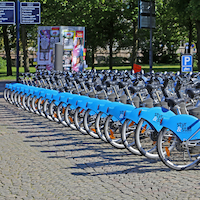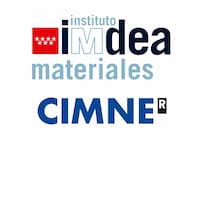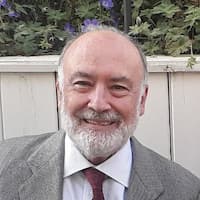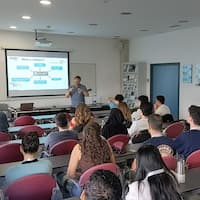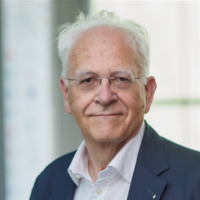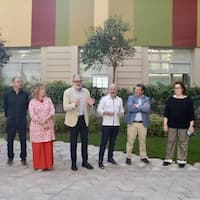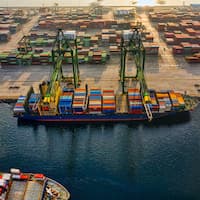research
City Flows Project: Mobility and Covid-19
European cities are currently adjusting public health measures to manage COVID-19 transition phases. Public health and transport authorities must anticipate and adapt strategies to maintain low-level or no-transmission status while allowing citizens to safely engage in daily activities. Public transport has been drastically affected by the pandemic, and plays a vital role in the economic and social functioning of European cities.
Cflow can potentially link health and mobility and adapt current Public Transport models and software tools to provide real-time counting and density information to produce heat maps to guide transit service providers for passenger management. This means that it can give the users Public Transport options according the virus transmission, occupancy criteria and passenger location inside Public Transport, to optimize efficiency, capacity and safety. Key impacts are: improved quality of urban transport, a tool to manage Public Transport mobility, restoring public confidence in Public Transport and high-impact assessments.
Potential of the tool
The quality of life in European metropolitan areas is under pressure due to COVID-19. To manage the crisis, minimise transmission risk and mitigate negative impacts, it is critical to improve the performance of urban mobility in cities. The high density in many European Metropolis makes it essential to develop scientifically based plans of Public Transport passenger flows.
The main aim is to define the optimal capacity and location of crowd flows in Public Transport and Urban environments and provide scalable software and communication tools to improve management and user experience.
Based on simulations of passengers and air propagation, Cflow can determine how flows must be organised in different environments:
- Indoor scenarios: Public Transport modes.
- Outdoor scenarios: sidewalks, parks, markets...
The current software tool can be potentially adapted to calculate optimal capacity as well as optimal location inside Public Transport modes for different COVID-19 scenarios. A communication plan for end-users, operators and mobility planner and city councils will be developed and disseminated.
The analyses: pilot deployment and assessment cycle in two cities will produce outputs that are scalable to other European cities. Moreover, it can provide software and communication tools for municipalities and public transport operators to define the optimal capacity and crowd distribution in Public Transport, and a real-time counting to ensure that capacity is inside the limits of virus transmission criteria.
The software tool allows continuous planning and input for evaluation and adaptation. For example, so that more buses can be added or transit agents can be sent to avoid a ‘red target’ bus to depart from a station. This ensures minimum risk of propagation for COVID19.
The code
The code that will be used to compute the simulations will be the PEDFLOW code [1], [3] which is a model based on a combination of force-based and agent-based methods. This can be explained by the fact that individuals move according Newton’s first law to define their movement. That means that they have will forces that seek global targets that are in motion while they are operating under a local level. So as to consider obstacles or other individuals, avoidance forces are introduced and, if needed, contact forces.
This code has been parallelised for both shared, via OpenMP at the loop level, and distributed memory architectures, using MPI and domain decomposition. This parallelisation has allowed to simulate real-time micro modelling of one million individuals [1] where it was the first time that such speeds were achieved for micro-modelling pedestrians behaviour. PEDFLOW has its own set of pre-processing tools that allow quick and easy import of geometrical/architectural data, specification of boundary conditions and pedestrian data, specification of diagnostics/output options, as well as all other runtime parameters.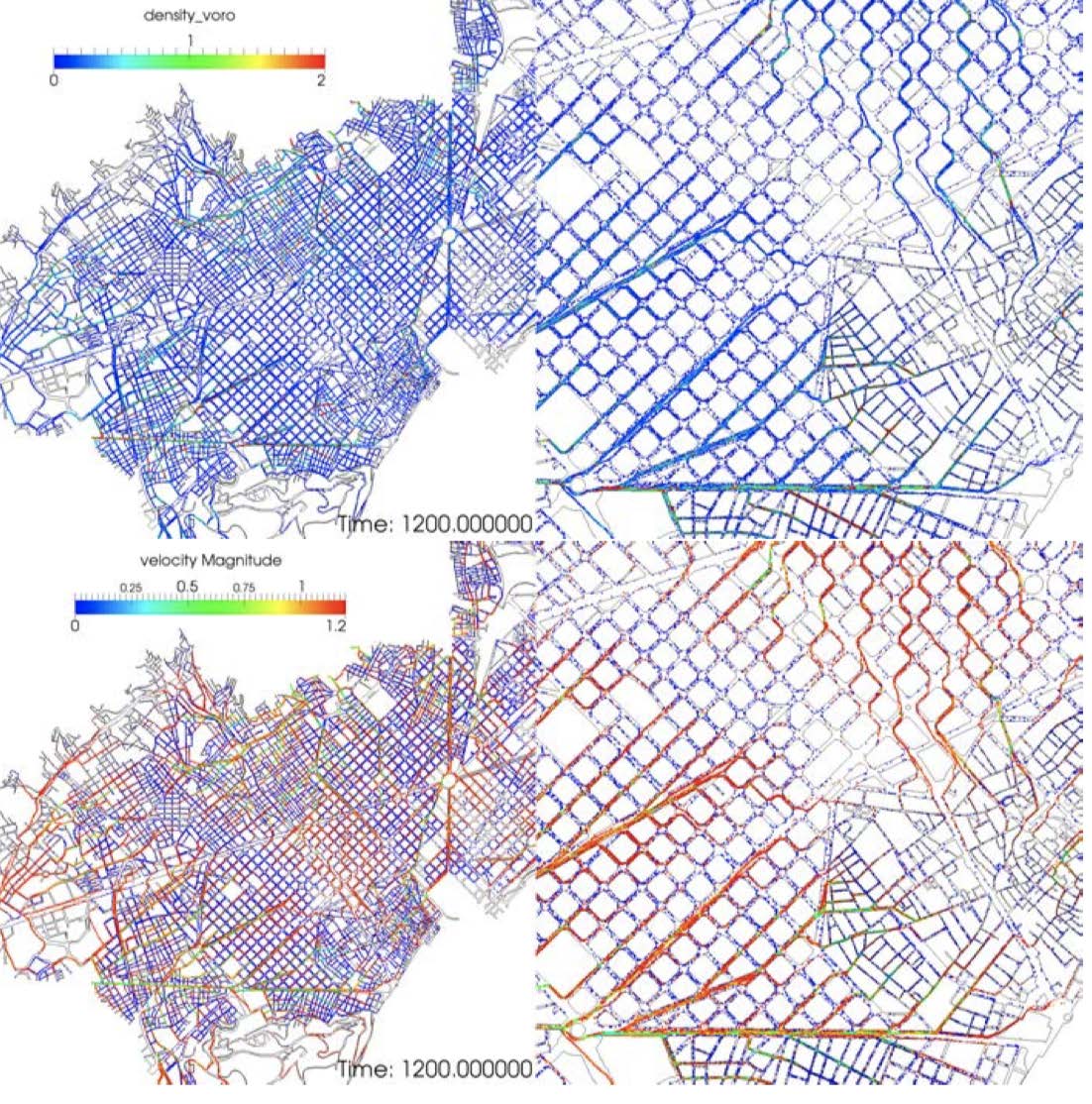
Figure 1: Densities and velocities for pedestrians for the evacuation at time 1200s [2].
Figure 2: Number of pedestrians in the field. Loss of efficiency due to load imbalance. Amount of pedestrians exchanged between domains[2].
Actions to develop this project
- The design, operation and management of the Living lab Sagrada Familia. This task aims to provide the City of Barcelona of a tool for the optimal redesign of the neighbourhood of Sagrada Familia. The city of Barcelona needs to decide how to replan cities, the metro entries and exits, the parks next to the Basilica, etc. To be able to do that, the tourism of Barcelona will decide the scenarios they are considering right now. Once we have this information, simulations will be done to get a first approach of which solutions can be discarded. Due to COVID-19, Radio Frequency Identification's (RFID’s) won’t be installed until mid 2021, so the first calibration of the model will be based on the data provided by a study that was done a couple of years ago by the tourism of Barcelona. We expect first results by the end of 2020. In 2021, this task will be completed by validating the model and the best design solution using the data provided by the sensors.
- Connecting innovative sensing techniques. Our experience in sensor system is wide and diverse and if what they want to do is a first filtering before sending the data, we will have to know in detail the existing or intended infrastructure and available hardware. For the filtering algorithms, it will be necessary to analyse what they want to filter specifically, if they want to make more complex averages, thresholds or calculations. In any case, these calculations must be embedded in the hardware or servers on the local network, if any.
- DSS module development. In this task, we will be in charge of deciding how to integrate the simulation data into the support system. First of all, we need to ensure that the data structure will be the same, this means that the input provided to the platform will be the same for everybody. Thus deciding which format will be chosen is necessary since the different pedestrian models need to give outputs that the DSS module can recognise. For the post-process, a study of the most relevant indicators will be performed. We will do some interviews on an international level to see if they have similar models and see which KPI’s are more appealing to them. Taking this into account, we will choose what to show, this means the visualising options of the platform.
- All educational and dissemination activities related to the CityFlows project. We are waiting for some further information in order to describe and determine this task with the deliverables.
References
[1] Rainald Lohner, Muhammad Baqui, Eberhard Haug, and Britto Muhamad. Realtime micro-modelling of a million pedestrians. Engineering Computations, 2016.[2] Rainald Lohner, Eberhard Haug, Claudio Zinggerling, and Eugenio O˜nate. Realtime micro-modelling of city evacuations. Computational Particle Mechanics, 5, 01 2017.
[3] Rainald Lohner, Britto Muhamad, Prabhu Dambalmath, and Eberhard Haug. Fundamental diagrams for specific very high density crowds. Collective Dynamics, 2:1–15, 2018.

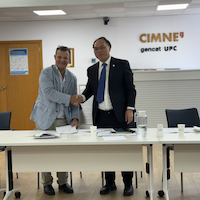

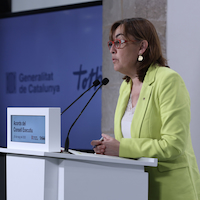


.jpg)
